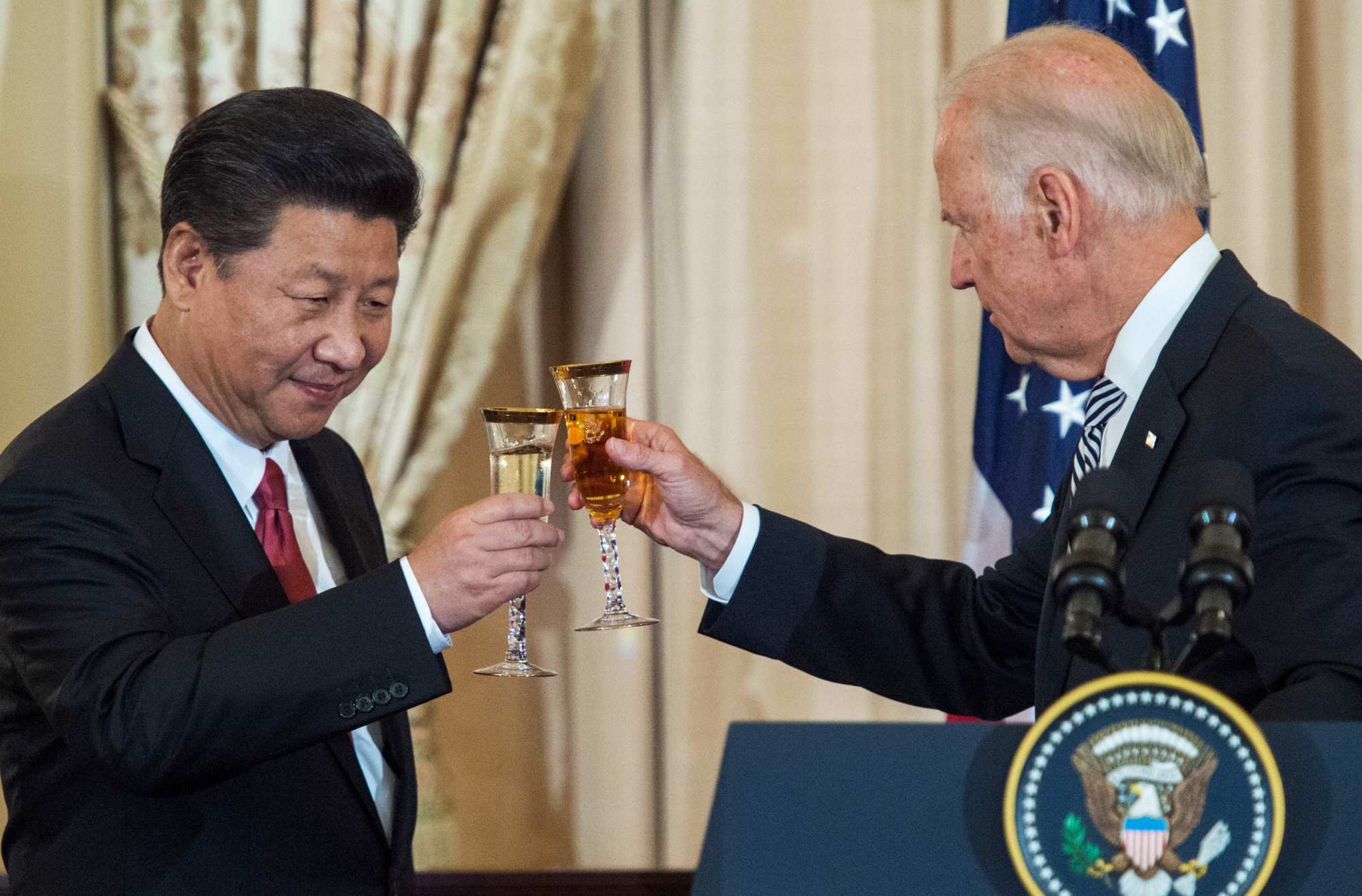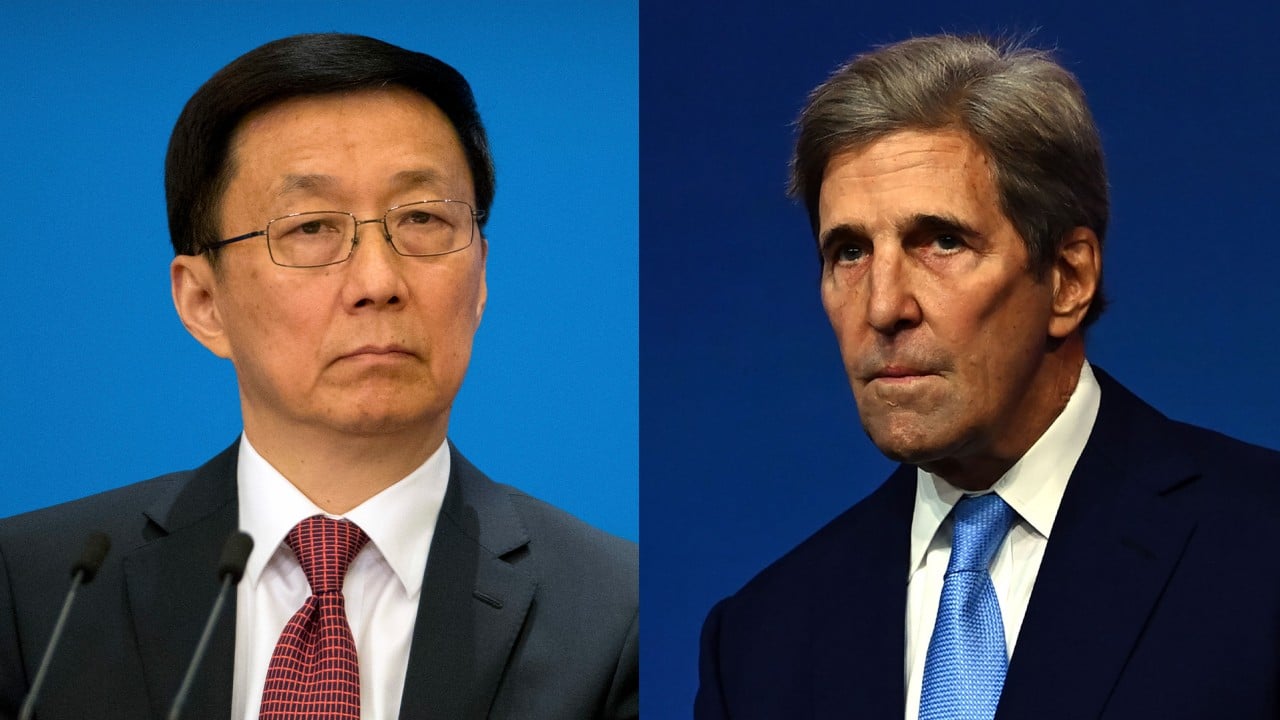
Scepticism of China’s climate change promises is misplaced
- Questioning whether Beijing’s ambitious targets are a PR trick to distract from its confrontation with Washington over human rights and Taiwan is disingenuous
- China has a spotty record, but transitioning to a low-carbon economy offers it immense geopolitical, economic and business opportunities
The US risks forcing China’s hand on Taiwan
At the meeting with 40 world leaders, Biden pledged to cut US greenhouse gas emissions in half by 2030 but did not offer details on how to get there. The pledge is aimed at putting more pressure on China and other countries for deeper cuts.
In his speech, Xi promised to work with the US and the rest of the international community on the climate, noting that China’s 30-year commitment to achieve carbon neutrality from peak emissions was a much shorter timeframe than that of the developed countries.
Biden has made fighting climate change and confrontation/competition with China two cornerstones of US foreign policy. How Washington and Beijing juggle those two critical but conflicting priorities will be a crucial indicator of the bilateral relationship’s future.

So far, the scepticism mainly focuses on the fact that China has not fleshed out a clear policy path to achieve the net zero commitment, although since September Xi has started to offer more broad goals at international meetings.
In December, Xi told the Climate Ambition Summit that by 2030 China would reduce carbon intensity – a measure of emissions relative to gross domestic product – by over 65 per cent, and raise the amount of energy generated by non-fossil fuels from 20 per cent to 25 per cent. Xi also pledged to increase the country’s forest cover by 6 billion cubic square metres and increase wind and solar energy capability to at least 1.2 billion kilowatts in the next decade.
Meanwhile, some analysts have noted that China has continued to add more coal plants and not set caps on carbon dioxide emissions and coal use.
At the speech on Thursday, Xi said China, the world’s largest coal consumer, accounting for more than half of the world’s total coal-fired power, would start to phase down coal consumption from the 2026 to 2030 period. “China will strictly control coal-fired power generation projects, and strictly limit the increase in coal consumption over the 14th Five-Year Plan [2021 to 2025], and phase it down in the 15th Five-Year plan [2026 to 2030].”
Fine line between stoking nationalism, global engagement
But it would be wrong to dismiss China’s pledges as a load of hot air. In fact, there are good reasons to believe that China will live up to its international commitments despite its spotty record in the past.
First, at a time when the US is building a coalition of like-minded Western allies to gang up on China over values and rules, the Chinese leadership sees plenty of geopolitical advantages in pursuing a low-carbon transition as well as immense economic and business opportunities.
As the world’s two largest carbon dioxide emitters, China and the US will have no choice but to work together on what is considered by some as a life or death issue for all of mankind.
That explains why John Kerry, the US climate envoy, travelled to Shanghai this month to meet his Chinese counterpart Xie Zhenhua. The two said they were “committed to cooperating” and promised concrete actions to reduce emissions in the 2020s.
Apparently referring to the international scepticism, Xi said China would deliver on its promise even though the task was “extremely challenging”. Climate diplomacy has become an important part of China’s foreign policy to push for multilateralism and enhance its leadership role in the world.
Is it too late to defuse China’s population time bomb?
He has aggressively pushed for his policy, but couched it in folksy language, saying clear waters and green mountains are just as valuable as mountains of gold and silver. And he has matched his words with tough actions as he removed a number of senior officials including the provincial party secretary of Shaanxi for paying lip service to environmental protection. He has also sent inspection teams across the country to investigate environmental damage.
Thirdly, China’s green commitments will not only become new economic drivers but will help the country to gain a new economic edge within the global economy and to reduce its dependence on energy imports.

He Jiankun, a top government adviser on climate change, cited official estimates that for China to achieve carbon neutrality by 2060, its total investment would need to amount to a whopping 100 trillion yuan (US$15 trillion) in the next three decades to 2050, averaging 33 trillion yuan per decade and 3.3 trillion yuan per year.
In the current five-year plan from 2021 to 2025, energy and climate indicators are grouped under the section of “ecological civilisation”, one of the six overarching economic and social development goals for the next five years.
Chinese officials have indicated that they will release detailed sector-specific and region-specific plans in the run-up to the annual UN climate conference in Glasgow known as COP26.
Moreover, China has already become one of the world’s leading manufacturers and exporters of green technologies, from solar panels to wind turbines and electric cars to batteries.
In fact, China’s rise in renewable energy was best illustrated by the latest warning from Antony Blinken, the US secretary of state, who said on Monday that America was falling behind. He said China’s leadership position in renewable energy technology was characterised by the fact it held a third of renewable energy patents. This would threaten America’s chances of shaping the world’s climate future and put American jobs at risk, he said.
All this shows that scepticism over China’s climate ambitions is disingenuous and misplaced. Cooperation and competition between the two countries is crucial to prevent catastrophe.
Wang Xiangwei is a former editor-in-chief of the South China Morning Post. He is now based in Beijing as editorial adviser to the paper


